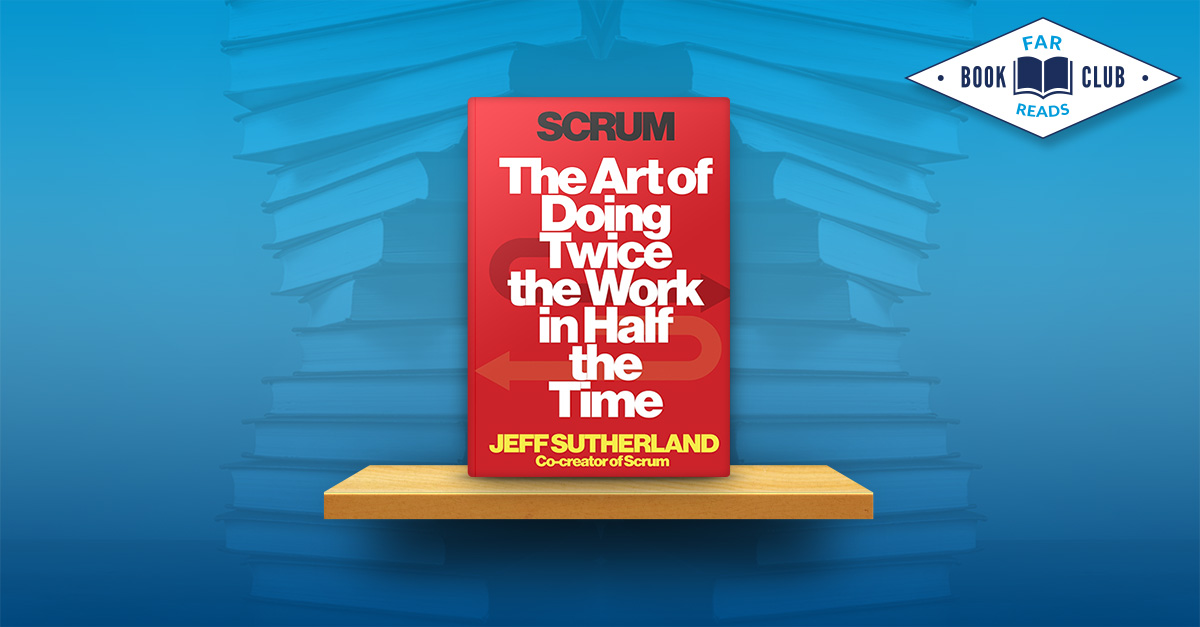
This month’s Far Reads book club pick was “Scrum: The Art of Doing Twice the Work in Half the Time
” by Jeff Sutherland. Here’s our recap.
Who Selected It
Chad Feldmann
Why He Selected It
“Trace Steffen (of HowFactory) and I were talking at a Startup Drinks about his experiences at the Iowa Startup Accelerator. He shared that Scrum was part of the training they went through in that program. He spoke very highly of it. Shortly thereafter I was reading a blog article about books for 2015 and it listed that book.”
What It’s About
Scrum is a simple management system for improving the effectiveness of any team.
It started as a faster, more reliable, more effective way to create software. However, it’s applicable to anyone who wrestles with complex projects.
The author says:
“Scrum is based on a simple idea: Whenever you start a project, why not regularly check in, see if what you’re doing is heading in the right direction, and if it’s actually what people want? And question whether there are any ways to improve how you’re doing what you’re doing, any ways of doing it better and faster, and what might be keeping you from doing that.”
Scrum incorporates concepts of continuous improvement and minimum viable product to get immediate feedback from consumers, rather than waiting until a project is finished.
This is in stark contrast to the traditional waterfall model, where each phase of development proceeds in strict order, and customer feedback comes at the end of the project.
Our Favorite Quote
“Traditionally, management wants two things on any project: control and predictability…Months of effort go into planning every detail, so there will be no mistakes, no cost overruns, and things will be delivered on schedule. The problem is that the rosy scenario never actually unfolds.”
How We’re Applying What We Learned
The book promised to “revolutionize how your company thinks, plans, and creates.”
Boy, did it ever. Scrum has changed just about every aspect of how we develop software.
Externally, we’re encouraging clients to:
- Focus on goals rather than get hung up on specific features—so we can focus on providing value rather than guessing what customers want.
- Deploy the minimal viable product (MVP) with just the core features and no more—so we don’t waste time and money building a product no one will want or pay for.
- Build out additional features based on customer feedback—so clients know they’re spending their money wisely and meeting customers’ needs.
Internally, we’ve embraced the key tenets of scrum:
- Work is broken into sprints, which allows us to focus on delivering features early and often. Sprints are typically two weeks in length, but can vary by project.
- The product owner (the client) helps define the sprints. So the features with the greatest customer value are done first.
- Instead of defining all requirements before development begins, requirements are finalized as sprints are defined. This has greatly reduced waste and rework, saving us time and clients money.
- Daily stand-up meetings are held in which the project’s Scrum Master asks each team member three questions:
- What did you do yesterday to help the team finish the sprint?
- What will you do today to help the team finish the sprint?
- What obstacles are getting in your way?
Now it’s time to tackle next month’s book: Tribes: We Need You to Lead Us
by Seth Godin.